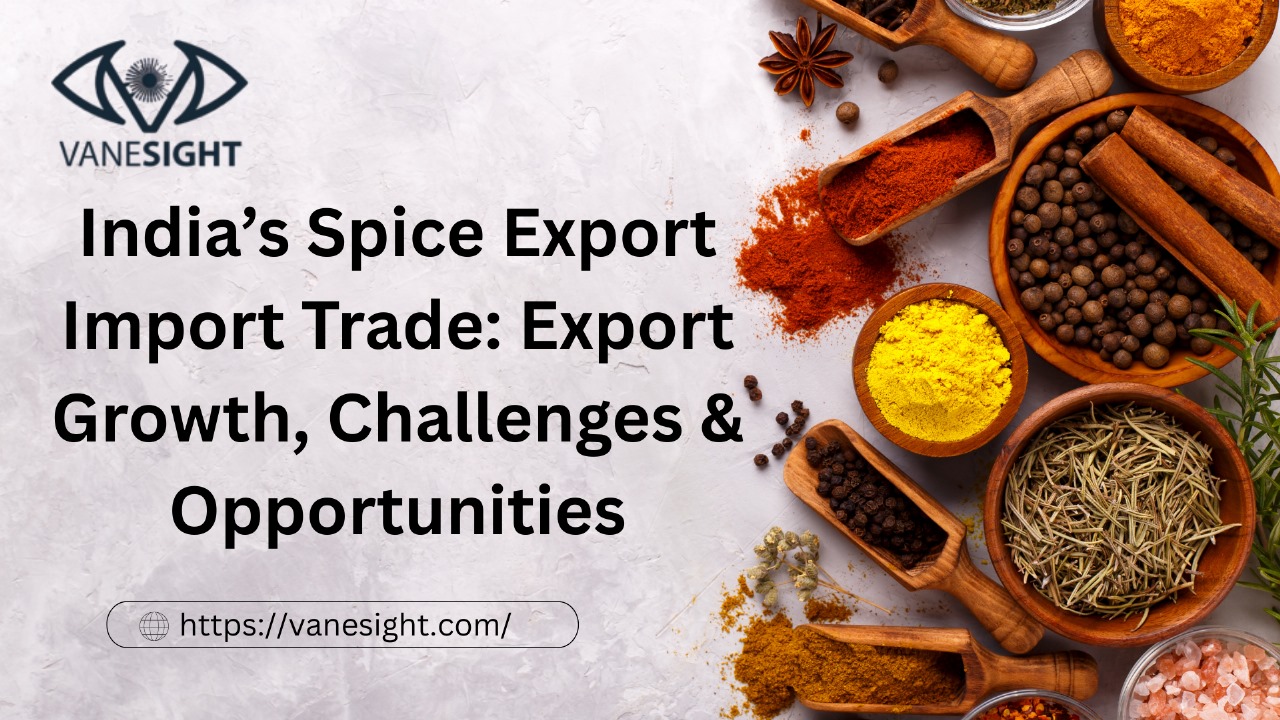India is one of the largest producers and exporters of spices in the world, contributing significantly to the global spice trade. With a long history of spice farming and spice trading, and now offering people lots of spices for international trades, spices are in high demand! In this blog, we will explore the latest trends, key statistics, top exporting countries, major buyers, and challenges in the spices import-export industry.
Total India Spices Export (2023-24)
India’s spice exports have shown consistent growth due to increasing global demand. According to the Spices Board of India, the country exported spices worth over $4 billion in 2023-24, with a volume exceeding 1.5 million metric tons.
Top Spices Products Exported from India
The most exported spices from India include:
- Chili (Pepper) – Largest share in export volume
- Turmeric – High demand for its medicinal properties
- Cumin (Jeera) – Widely used in Middle Eastern & Mexican cuisines
- Coriander (Dhaniya) – Popular in European and Asian markets
- Cardamom – Both small and large varieties are exported
Top 5 Countries Importing Indian Spices
India exports spices to over 160 countries, with the top buyers being:
- USA – Largest importer of Indian spices
- China – High demand for turmeric and chili
- UAE – Major re-export hub for Indian spices
- Bangladesh – Key buyer of cumin and coriander
- UK – Growing demand for organic and premium spices
Top 5 Buyers and Suppliers in India
Top Exporters (Indian Companies)
- Synthite Industries Ltd – Leading spice extract manufacturer
- AVT McCormick – Major player in spice processing
- Everest Spices – Popular brand in global markets
- MDH Spices – Exports to the USA, UK, and Middle East
- Catch Foods – Known for blended spices and masalas
Top Importers (Foreign Buyers)
- McCormick & Company (USA)
- Olam International (Singapore)
- Unilever (UK/Netherlands)
- Nestlé (Switzerland)
- S&B Foods (Japan)
Top Export/Import Companies in India
Apart from the major brands, several trading companies facilitate spice exports:
- ITC Ltd
- Patel Brothers
- Shreeji Traders
- Virdhara International
- MVT Foods
Global Trade Issues in Spice Industry
Despite strong growth, the spice trade faces challenges:
- Strict Quality Regulations – EU and USFDA impose stringent norms on pesticide residues.
- Logistics & Supply Chain Delays – Rising shipping costs impact profitability.
- Price Volatility – Weather conditions affect spice production and pricing.
- Geopolitical Tensions – Trade restrictions in certain regions disrupt exports.
HSN Code for Spices
The Harmonized System Nomenclature (HSN) codes help classify spices for customs and taxation. Key HSN codes include:
- 0904 – Pepper (Black & White)
- 0906 – Cinnamon
- 0908 – Nutmeg, Mace, Cardamom
- 0910 – Ginger, Saffron, Turmeric
- 1207 – Other oilseeds (Mustard, Fenugreek)
Global Import Export Data Provider
To analyze the spice trade, businesses rely on global import export data provider that offer real-time trade insights. These platforms help exporters and importers track demand, pricing, and competitor movements. Vanesight leading import export data providers. These platforms provide global trade data, helping businesses make informed decisions.
Conclusion
India’s spice export industry continues to thrive, driven by global demand and strong production capabilities. By leveraging import export trade data, businesses can optimize their supply chains and expand into new markets. With the right strategies, Indian spice exporters can overcome challenges and strengthen their position in the international market.
Q1. Which spice contributes the highest export value from India?
Chili (Pepper) dominates India’s spice exports, accounting for nearly 30% of total export volume, followed by turmeric and cumin. The USA and Bangladesh are the largest buyers of Indian chili.
Q2. Why does the UAE import so many spices from India?
The UAE acts as a re-export hub, importing Indian spices (especially cumin and cardamom) to distribute to the Middle East, Africa, and Europe due to its strategic logistics network.
Q3. How do EU regulations impact Indian spice exports?
The EU enforces strict Maximum Residue Limits (MRLs) for pesticides. Indian exporters must comply with SPS (Sanitary & Phytosanitary) measures, or shipments face rejection.
Q4. Which spices have the highest demand in the USA?
The USA imports black pepper, chili powder, turmeric, and ready-to-use spice blends from India, driven by the food processing and health supplement industries.
Q5. How can new exporters find buyers for Indian spices?
Use Vanesight global trade data platforms
Spices Board India’s export promotion schemes
International trade fairs (e.g., Gulfood, ANUGA)
B2B platforms like IndiaMart or Alibaba.


Leave a Reply to India’s Spice Export-Import Trade: Export Growth, Challenges & Opportunities – vanesight Cancel reply